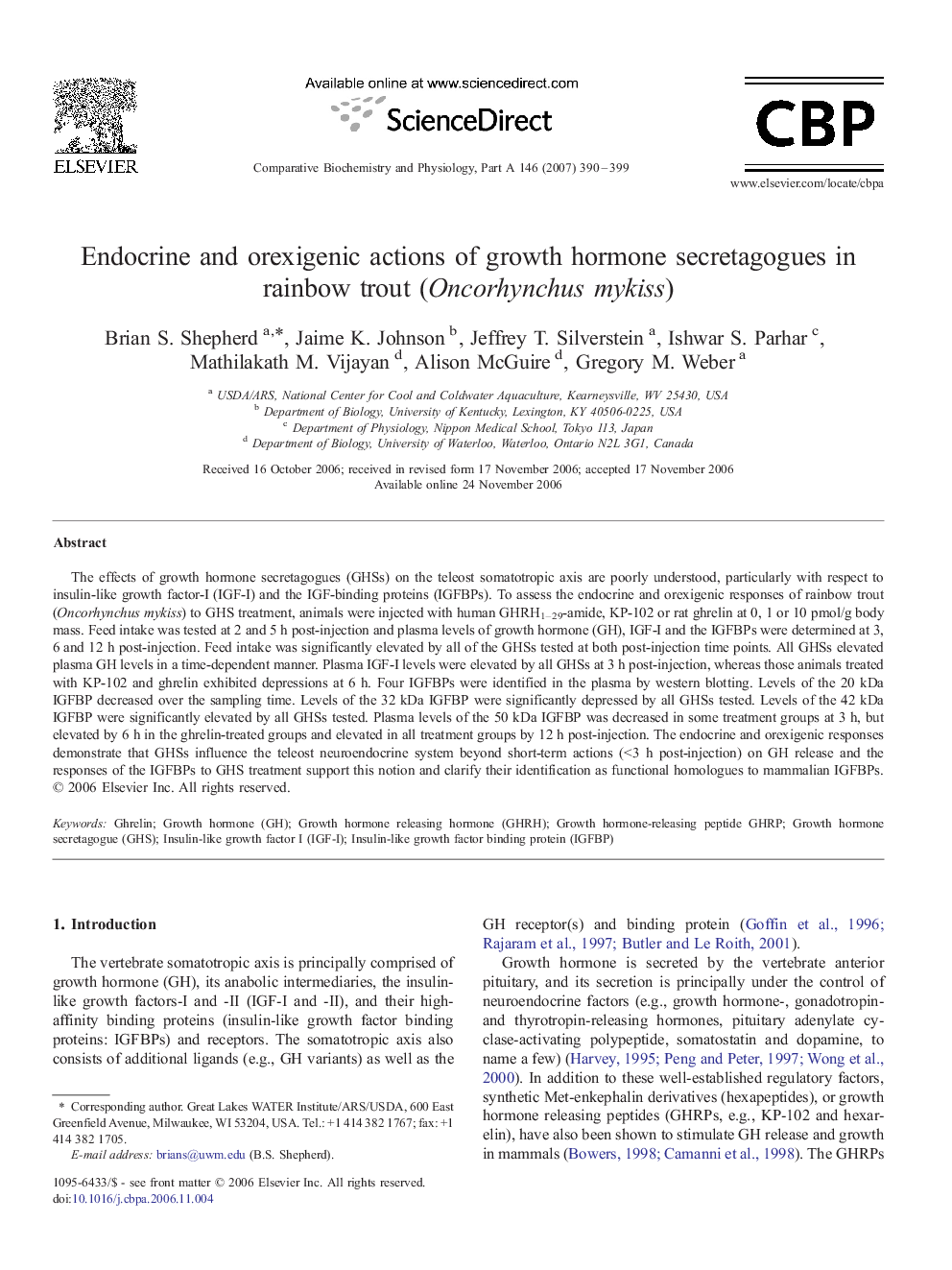| Article ID | Journal | Published Year | Pages | File Type |
|---|---|---|---|---|
| 1974562 | Comparative Biochemistry and Physiology Part A: Molecular & Integrative Physiology | 2007 | 10 Pages |
The effects of growth hormone secretagogues (GHSs) on the teleost somatotropic axis are poorly understood, particularly with respect to insulin-like growth factor-I (IGF-I) and the IGF-binding proteins (IGFBPs). To assess the endocrine and orexigenic responses of rainbow trout (Oncorhynchus mykiss) to GHS treatment, animals were injected with human GHRH1–29-amide, KP-102 or rat ghrelin at 0, 1 or 10 pmol/g body mass. Feed intake was tested at 2 and 5 h post-injection and plasma levels of growth hormone (GH), IGF-I and the IGFBPs were determined at 3, 6 and 12 h post-injection. Feed intake was significantly elevated by all of the GHSs tested at both post-injection time points. All GHSs elevated plasma GH levels in a time-dependent manner. Plasma IGF-I levels were elevated by all GHSs at 3 h post-injection, whereas those animals treated with KP-102 and ghrelin exhibited depressions at 6 h. Four IGFBPs were identified in the plasma by western blotting. Levels of the 20 kDa IGFBP decreased over the sampling time. Levels of the 32 kDa IGFBP were significantly depressed by all GHSs tested. Levels of the 42 kDa IGFBP were significantly elevated by all GHSs tested. Plasma levels of the 50 kDa IGFBP was decreased in some treatment groups at 3 h, but elevated by 6 h in the ghrelin-treated groups and elevated in all treatment groups by 12 h post-injection. The endocrine and orexigenic responses demonstrate that GHSs influence the teleost neuroendocrine system beyond short-term actions (< 3 h post-injection) on GH release and the responses of the IGFBPs to GHS treatment support this notion and clarify their identification as functional homologues to mammalian IGFBPs.
